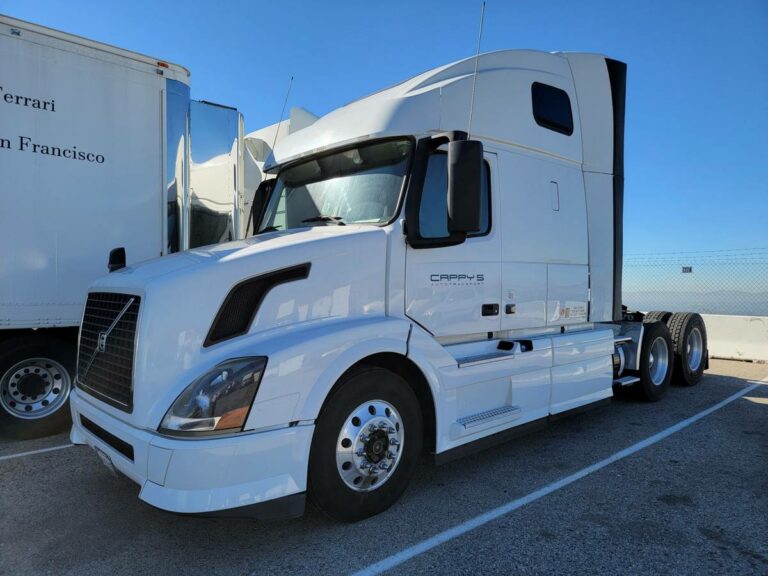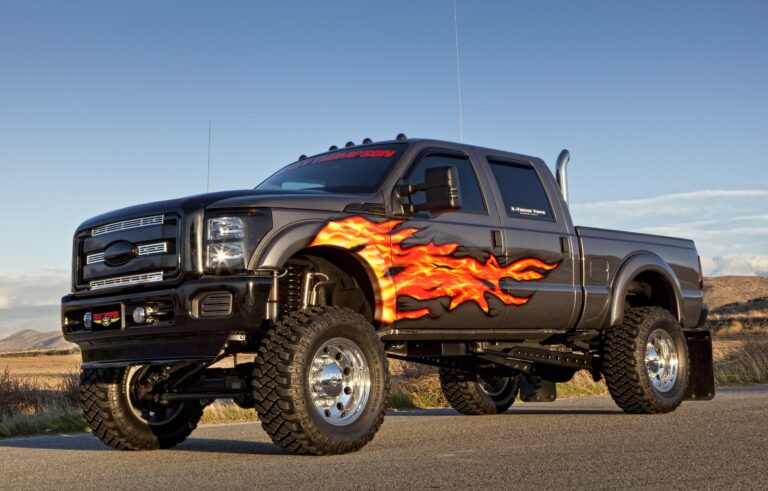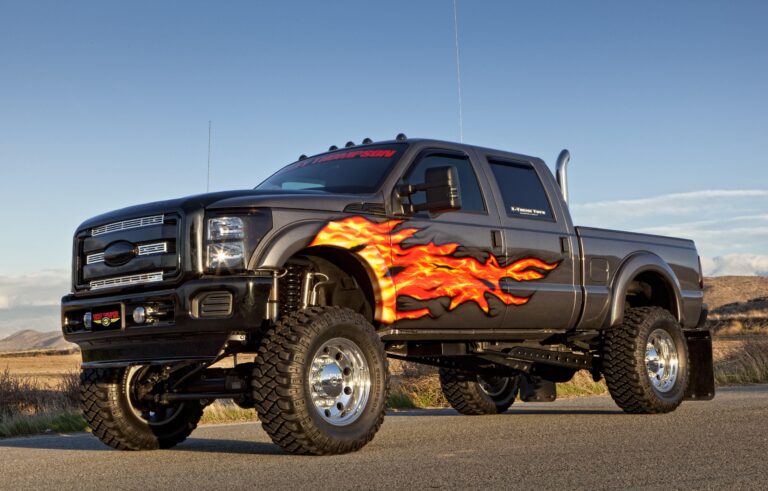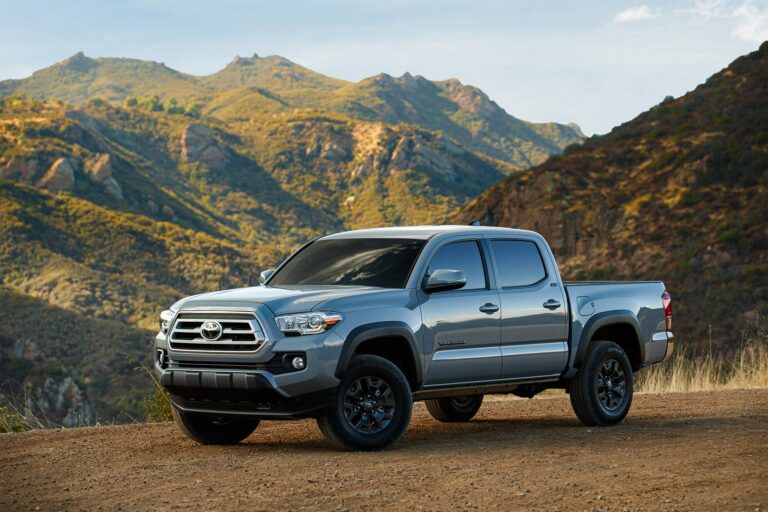26 Foot Box Truck Specifications: Your Comprehensive Guide to a Logistics Workhorse
26 Foot Box Truck Specifications: Your Comprehensive Guide to a Logistics Workhorse cars.truckstrend.com
In the vast and dynamic world of logistics, commercial transport, and personal moving, the 26-foot box truck stands out as an indispensable asset. It represents a sweet spot in vehicle size, offering substantial cargo capacity without always requiring a Commercial Driver’s License (CDL) for operation, making it accessible to a broader range of users. From small businesses making deliveries to large corporations managing supply chains, and even individuals tackling a major move, understanding the precise specifications of a 26-foot box truck is paramount for efficient, safe, and cost-effective operations.
This comprehensive guide delves into every critical aspect of the 26-foot box truck, from its core dimensions and weight capacities to engine types, essential features, operational considerations, and even a glimpse into pricing. Whether you’re considering a purchase, planning a rental, or simply seeking to deepen your knowledge, this article will equip you with the insights needed to navigate the world of these versatile vehicles.
26 Foot Box Truck Specifications: Your Comprehensive Guide to a Logistics Workhorse
Core Specifications: The Heart of the Beast
The true utility of a 26-foot box truck lies in its meticulously engineered specifications. These details dictate what the truck can carry, where it can go, and how it will perform.
Dimensions: Maximizing Space and Maneuverability
While the "26-foot" refers specifically to the length of the cargo box, it’s crucial to understand the full scope of its dimensions, both interior and exterior.
- Exterior Dimensions:
- Overall Length: Typically ranges from 33 to 36 feet, including the cab and the bumper. This is vital for navigating tight turns, parking, and fitting into loading docks.
- Overall Width: Usually between 96 and 102 inches (8 to 8.5 feet). This width is standard for most commercial vehicles and influences lane adherence and clearance.
- Overall Height: Generally 12 to 13.5 feet, including the box and potential roof-mounted equipment. This is a critical measurement for avoiding low bridges, tunnels, and overhead obstructions.

- Interior Cargo Box Dimensions:
- Length: Approximately 26 feet. This is the primary advertised length and dictates the maximum length of items that can be transported.
- Width: Typically 96 to 102 inches (8 to 8.5 feet). This allows for two standard pallets (48×40 inches) to be loaded side-by-side, maximizing efficiency.
- Height: Generally 96 to 102 inches (8 to 8.5 feet). This generous height accommodates tall items, stacked boxes, and often allows individuals to stand upright within the cargo area.
- Cubic Feet: Based on these interior dimensions, a 26-foot box truck offers an impressive cargo volume, typically ranging from 1,664 to 1,872 cubic feet. This substantial space is why it’s a popular choice for large moves or significant freight.


Weight Capacities: Understanding the Limits
Weight specifications are arguably the most critical for safety, legality, and operational efficiency. Overloading a truck is dangerous and illegal.
- Gross Vehicle Weight Rating (GVWR): This is the maximum permissible total weight of the vehicle, including the truck itself, its fuel, passengers, and all cargo. For 26-foot box trucks, the GVWR typically falls between 25,500 lbs and 33,000 lbs. Trucks with a GVWR of 26,001 lbs or more generally require a CDL for operation, while those at or below 26,000 lbs often do not, depending on state regulations.
- Payload Capacity: This refers to the maximum weight of cargo the truck can legally carry. It is calculated by subtracting the truck’s curb weight (the weight of the empty vehicle with full fluids) from its GVWR. Payload capacities for 26-foot box trucks typically range from 10,000 lbs to 15,000 lbs, varying significantly based on the truck’s make, model, engine, and specific chassis configuration.
- Curb Weight: The weight of the truck itself, without cargo. This can vary widely but is generally in the range of 10,000 lbs to 15,000 lbs for a 26-foot box truck.
- Gross Combined Weight Rating (GCWR): If the truck is equipped for towing, the GCWR is the maximum permissible weight of the truck and any attached trailer. While not all 26-foot box trucks are designed for towing heavy loads, some configurations allow for it.
Engine and Drivetrain: Powering the Load
The heart of any truck is its powertrain, which dictates performance, fuel efficiency, and reliability.
- Engine Types:
- Diesel Engines: More common in heavier-duty 26-foot box trucks (especially those nearing the 33,000 lbs GVWR mark). They offer superior torque, better fuel efficiency (especially under load), and longer lifespans.
- Gasoline Engines: Found in lighter-duty 26-foot models, particularly those designed for non-CDL operation. They are typically cheaper to purchase, have lower maintenance costs, and are quieter, but offer less torque and often lower fuel economy than diesels.
- Horsepower and Torque: Horsepower typically ranges from 200 to 300 HP, while torque figures can be anywhere from 500 to 800+ lb-ft, with diesel engines usually at the higher end. Higher torque is crucial for hauling heavy loads and navigating inclines.
- Transmission Types: Most modern 26-foot box trucks feature automatic transmissions for ease of driving, especially in stop-and-go urban environments. Manual transmissions are less common but offer more direct control for experienced drivers.
- Fuel Tank Capacity & MPG: Fuel tank sizes typically range from 30 to 50 gallons. Fuel economy varies greatly with load, terrain, and driving style, but generally falls between 6 to 10 miles per gallon (MPG) for gasoline engines and 8 to 12 MPG for diesel engines.
Chassis and Suspension: The Foundation of Stability
The chassis forms the backbone of the truck, while the suspension ensures a stable and relatively comfortable ride, even with heavy loads.
- Frame Materials: High-strength steel is standard for durability and load-bearing capacity.
- Suspension Systems:
- Leaf Spring Suspension: The most common and robust system, excellent for heavy loads.
- Air Ride Suspension: Less common but available, offering a smoother ride, better cargo protection, and the ability to "kneel" the rear of the truck for easier loading/unloading.
- Brake Systems: Most 26-foot box trucks utilize hydraulic disc brakes or hydraulic drum brakes. Heavier models (closer to 33,000 lbs GVWR) may feature air brakes, which require a specific endorsement on a CDL.
- Tires: Designed for commercial use, tires are typically heavy-duty radial tires, often dual tires on the rear axle for increased stability and load capacity.
Key Features and Equipment: Enhancing Usability
Beyond the fundamental specifications, a host of features and optional equipment can significantly enhance the functionality and safety of a 26-foot box truck.
- Cargo Area Features:
- Rear Door Types:
- Roll-up Door: Most common, saves space at the rear, but can reduce vertical clearance by a few inches.
- Swing Doors: Offer full height and width clearance but require space behind the truck to open.
- E-track Systems: Vertical or horizontal tracks mounted on the interior walls, allowing for flexible attachment of straps, shoring beams, and cargo control devices. Essential for securing loads.
- Interior Lighting: Adequate LED lighting is crucial for visibility during loading and unloading, especially in low-light conditions.
- Plywood Lining/Scuff Plates: Protect the interior walls from damage during loading and transit.
- Rear Door Types:
- Loading and Unloading Aids:
- Liftgate: A hydraulic platform at the rear of the truck that can raise and lower heavy items. Capacities typically range from 1,500 lbs to 3,000 lbs. Tuck-away liftgates fold under the truck, while rail liftgates are permanently mounted at the rear.
- Ramp: A sturdy ramp, often aluminum or wood, provides an alternative for rolling items onto the truck.
- Cab Features: Modern trucks prioritize driver comfort and safety.
- Seating: Typically accommodates 2-3 passengers.
- Climate Control: Air conditioning and heating are standard.
- Infotainment: Radios, Bluetooth connectivity, and sometimes navigation systems.
- Safety Features: Anti-lock Braking Systems (ABS), traction control, stability control, rearview cameras, and increasingly, advanced driver-assistance systems (ADAS) like lane departure warnings.
Important Considerations for Operation and Purchase
Operating or acquiring a 26-foot box truck involves several practical considerations beyond just the vehicle’s specs.
- Licensing Requirements: As noted, the 26,001 lbs GVWR threshold is critical. If the truck’s GVWR is 26,001 lbs or more, a CDL (Class B or higher) is typically required. Below this, a standard Class D driver’s license is often sufficient for non-commercial use, but always verify state-specific regulations, as some states have specific rules for vehicles over a certain weight even for personal use.
- Maintenance and Running Costs: These trucks require regular maintenance, including oil changes, tire rotations, brake inspections, and more. Fuel is a significant ongoing cost. Budgeting for these expenses is essential.
- Choosing the Right Truck:
- New vs. Used: New trucks offer warranties and the latest features but come at a premium. Used trucks are more budget-friendly but may require more immediate maintenance.
- Rental vs. Purchase: For infrequent use, renting is more economical. For consistent, high-volume needs, purchasing offers long-term savings and customization options.
- Industry Needs: Consider specific needs: refrigerated (reefer) trucks for temperature-sensitive goods, or specialized moving trucks with built-in ramps and more tie-downs.
- Safety Tips: Always perform a pre-trip inspection (lights, tires, fluid levels). Distribute weight evenly within the cargo box to maintain stability. Practice defensive driving techniques, as a loaded box truck has a longer stopping distance and different handling characteristics than a passenger car.
Types and Customizations
While the "26-foot dry box" is the most common configuration, variations exist for specialized applications:
- Standard Dry Van: The most prevalent type, designed for general freight that doesn’t require temperature control.
- Refrigerated (Reefer) Box Truck: Equipped with an insulated box and a refrigeration unit to maintain specific temperatures, crucial for transporting food, pharmaceuticals, or other perishable goods.
- Moving Truck Configurations: Often come with built-in ramps, more robust tie-down points, and sometimes even a "mom’s attic" over the cab for extra storage.
- Custom Upfits: Depending on the business, box trucks can be customized with shelving, specialized equipment mounts, liftgates of varying capacities, or even mobile workshops.
Pricing Information
The cost of a 26-foot box truck can vary significantly based on brand, year, mileage, condition, engine type, and added features like liftgates or refrigeration units. The table below provides a general estimated price range, but always consult current market conditions and specific dealer listings for accurate pricing.
| Truck Type | Condition | Estimated Price Range (USD) | Key Features/Notes |
|---|---|---|---|
| Standard Dry Van | New | $70,000 – $120,000+ | New chassis, full warranty, customizable |
| Standard Dry Van | Used | $20,000 – $65,000 | Price varies greatly by mileage, age, and condition |
| Refrigerated (Reefer) | New | $100,000 – $180,000+ | Includes insulation and refrigeration unit. High operating costs. |
| Refrigerated (Reefer) | Used | $35,000 – $90,000 | Condition of reefer unit is critical. |
| Rental (Daily) | N/A | $80 – $200+ per day | Plus mileage fees, insurance, and fuel. |
| Rental (Weekly) | N/A | $400 – $900+ per week | More economical for longer rentals. |
Note: These are estimated ranges and do not include taxes, registration, insurance, or ongoing operational costs.
Frequently Asked Questions (FAQ)
Q1: Do I need a CDL to drive a 26-foot box truck?
A1: It depends on the truck’s Gross Vehicle Weight Rating (GVWR). If the GVWR is 26,000 lbs or less, a standard Class D driver’s license is often sufficient for non-commercial use. If the GVWR is 26,001 lbs or more, a Commercial Driver’s License (CDL), typically a Class B, is required. Always check your specific state’s Department of Motor Vehicles (DMV) regulations.
Q2: What’s the average fuel economy for a 26-foot box truck?
A2: Fuel economy varies significantly with load, terrain, engine type, and driving habits. Gasoline engines typically get 6-10 MPG, while diesel engines can achieve 8-12 MPG.
Q3: What is the typical payload capacity of a 26-foot box truck?
A3: Payload capacity generally ranges from 10,000 lbs to 15,000 lbs, depending on the truck’s specific curb weight and GVWR. Always check the sticker on the specific truck for its exact payload capacity.
Q4: Can a 26-foot box truck tow a trailer?
A4: Some 26-foot box trucks are equipped with a hitch and are rated to tow a trailer, indicated by their Gross Combined Weight Rating (GCWR). However, not all are designed for heavy towing. Always verify the GCWR and ensure the truck is properly equipped before attempting to tow.
Q5: How much does it cost to rent a 26-foot box truck?
A5: Rental costs typically range from $80 to $200+ per day, plus mileage fees (e.g., $0.50 – $0.99 per mile), fuel, and optional insurance. Weekly rates are often more economical.
Q6: What’s the difference between a roll-up and swing door on a box truck?
A6: A roll-up door retracts upwards into the ceiling of the box, saving space behind the truck but slightly reducing vertical clearance. Swing doors open outwards like traditional doors, offering full height and width clearance but requiring ample space behind the truck to open fully.
Concluding Summary
The 26-foot box truck is a cornerstone of modern logistics, offering an exceptional balance of cargo capacity and relative maneuverability. Understanding its detailed specifications – from critical dimensions and weight capacities to engine types, essential features, and operational considerations – is not just about technical knowledge; it’s about ensuring safety, compliance, and cost-efficiency. Whether you’re a business owner optimizing your fleet, a logistics manager planning routes, or an individual embarking on a significant relocation, a thorough grasp of these specifications empowers you to make informed decisions. This versatile workhorse continues to be a vital link in the chain of commerce, moving goods and lives forward with remarkable capability.





